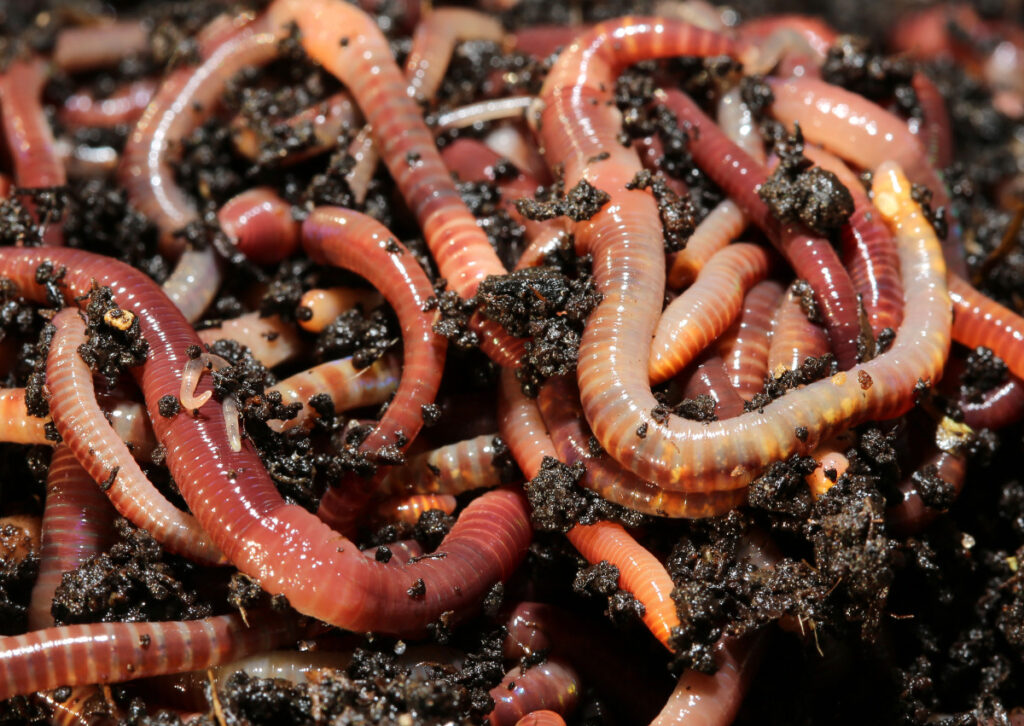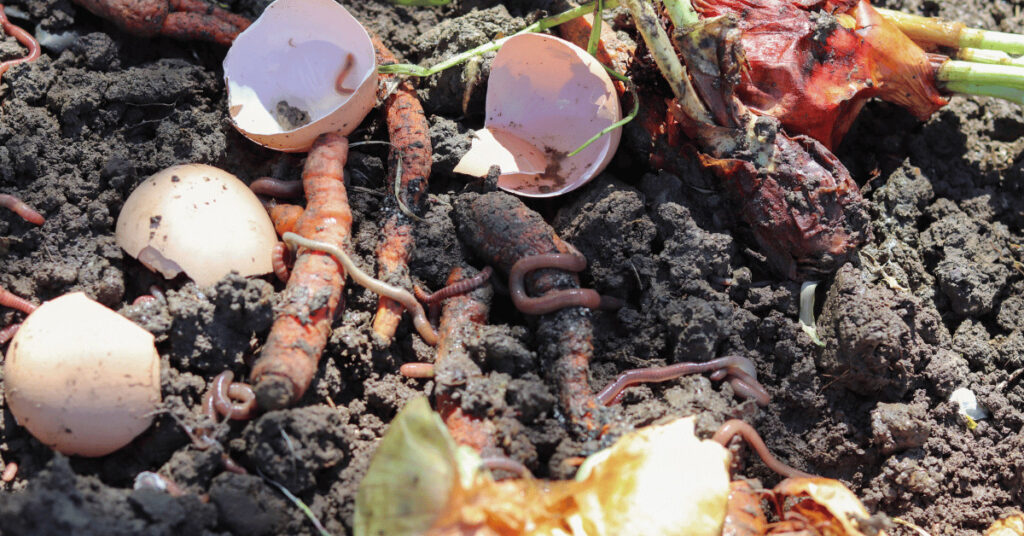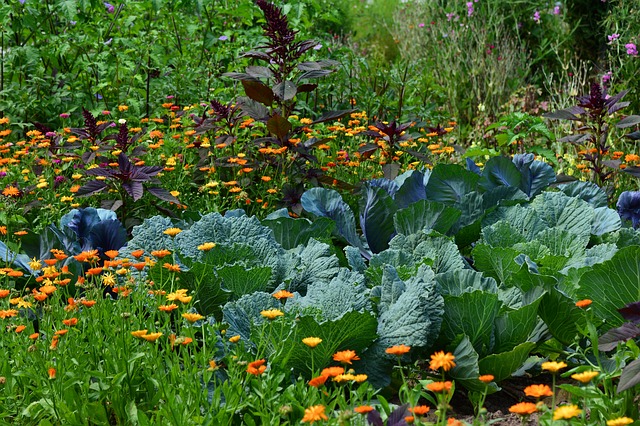The Role of Earthworms in Sustainable Gardening and Agriculture

In the world of gardening and agriculture, few creatures play as vital a role as the humble earthworm. These small, often overlooked invertebrates are the unsung heroes of our gardens and fields, tirelessly working beneath the surface to improve soil health, enhance plant growth, and contribute to the overall functioning of our ecosystems. Yet, despite their importance, earthworms are often misunderstood and underappreciated.
This article aims to shed light on the remarkable world of earthworms and their crucial role in sustainable gardening and agriculture. We will delve into the biology and ecology of earthworms, explore the various benefits they bring to our gardens and farms, and debunk some common myths and misconceptions about these fascinating creatures. We will also discuss how to attract and maintain a healthy earthworm population in your garden, and explore the role of earthworms in sustainable agriculture and climate change mitigation.
Whether you’re a seasoned gardener, a small-scale farmer, or simply someone interested in nature and sustainability, this article will provide you with a deeper understanding and appreciation of earthworms. So, let’s embark on this journey into the world beneath our feet, and discover how these tiny creatures can make a big difference in our gardens, our farms, and our planet.
Understanding Earthworms
Earthworms are fascinating creatures that play a vital role in our ecosystem. They belong to the phylum Annelida, which includes over 7,000 species of worms. Earthworms are characterized by their segmented bodies, each segment containing a set of organs. Despite their simple appearance, earthworms have complex internal systems that allow them to thrive in various environments.
Earthworms can be found in nearly every corner of the globe, from the deepest soils to the leaf litter of forests, and even in the compost pile in your backyard. They are particularly abundant in temperate and tropical regions where the soil is rich and moist. However, they can adapt to a wide range of environmental conditions, making them one of the most ubiquitous creatures on our planet.
Earthworms are often called “nature’s plow,” as they are instrumental in turning the soil, allowing air and water to penetrate deeper, and bringing nutrients closer to the surface. They feed on organic matter, breaking it down into simpler forms that plants can use. This process of decomposition and nutrient cycling makes earthworms a gardener’s best friend.
In the next section, we will delve into the different types of earthworms and their unique roles in the soil ecosystem.
Different Types of Earthworms
Earthworms are an incredibly diverse group of organisms, with thousands of species found all over the globe. They play various roles in the soil ecosystem depending on their lifestyle and feeding habits. Here, we’ll explore some of the major types of earthworms that you might encounter in your garden or compost pile.
- Epigeic Earthworms: These earthworms, often bright red or reddy-brown, live on the surface of the soil in leaf litter. They do not typically make burrows but instead live in and feed on the leaf litter. This group includes the well-known compost worms or red wigglers (Eisenia fetida), which are commonly used in vermiculture and composting systems due to their efficiency at breaking down organic matter[1][3][4].
- Endogeic Earthworms: Living in and feeding on the soil, endogeic earthworms create horizontal burrows through the soil for movement and feeding. These burrows are reused to a certain extent. Endogeic earthworms are often pale colors, such as grey, pale pink, green, or blue. Some species can burrow very deeply in the soil. This group includes the earthworker worms, also known as topsoil worms, and root-dwelling worms, both of which play important roles in aerating the soil and breaking down organic matter[1][3].
- Anecic Earthworms: Often larger than other types of earthworms and sporting a reddish-brown color, anecic earthworms live in vertical burrows in the soil and feed on organic matter on the soil surface. They are also known as deep burrowers[1][2].
In addition to these, there are many other types of earthworms, including the European Nightcrawler, African Nightcrawler, and Red Marshworm, among others[5]. Each of these earthworm types plays a unique role in the soil ecosystem, contributing to soil health and plant growth in different ways.
Sustainable Gardening and Agriculture: A Brief Overview
Sustainable gardening and agriculture are practices that aim to meet the needs of the present without compromising the ability of future generations to meet their own needs. These practices are designed to be environmentally sound, economically viable, and socially responsible. They promote a healthy environment, a healthy food supply, and a healthy community.
At the heart of sustainable gardening and agriculture is the concept of stewardship. Stewardship is the responsible management of resources, including soil, water, air, plants, and animals, for the benefit of all. It involves making decisions that have a long-term perspective, considering the impacts on the environment and on future generations.
Sustainable gardening and agriculture practices are diverse and can be applied in many different contexts, from small home gardens to large commercial farms. They include organic farming, permaculture, agroforestry, and Hugelkultur, a method of composting large pieces of wood to improve soil fertility and water retention. Despite their diversity, all sustainable practices share some common principles.
Firstly, sustainable gardening and agriculture aim to enhance the health and fertility of the soil. Healthy soil is the foundation of any garden or farm, and it’s vital for the growth of plants. Practices such as composting, mulching, and crop rotation can help to improve soil health and fertility. Earthworms play a crucial role in this process, as they help to break down organic matter and recycle nutrients in the soil.
Secondly, sustainable practices aim to conserve water and protect water quality. This can be achieved through techniques such as rainwater harvesting, drip irrigation, and the use of drought-tolerant plants. Again, earthworms contribute to this goal by improving soil structure, which enhances its ability to retain water.
Thirdly, sustainable gardening and agriculture aim to promote biodiversity. Biodiversity is the variety of life in a particular habitat or ecosystem, and it’s essential for the health of our planet. A diverse garden or farm is more resilient to pests and diseases, and it provides habitat for beneficial insects and other wildlife. Planting a variety of crops, using native plants, and creating wildlife-friendly habitats are all ways to enhance biodiversity.
Lastly, sustainable practices aim to reduce waste and minimize the use of non-renewable resources. This can be achieved through composting, recycling, and the use of renewable energy sources. Composting, in particular, is a great way to recycle organic waste and turn it into a valuable resource for the garden. It’s also a process in which earthworms play a key role.
In the context of sustainable gardening and agriculture, earthworms are truly invaluable. They contribute to soil health, water conservation, and waste reduction, among other things. In the following sections, we will explore in more detail the benefits of earthworms in the garden, how to attract and maintain a healthy earthworm population, and the role of earthworms in sustainable agriculture.
Sustainable gardening and agriculture are not just about growing plants or raising animals. They’re about creating a healthy and resilient system that benefits the environment, the community, and future generations. And in this system, earthworms have a vital role to play.
The Benefits of Earthworms in the Garden
Earthworms are often referred to as the ‘engineers of the soil’, and for good reason. Their activities in the soil environment have profound effects on the physical, chemical, and biological properties of the soil, making them indispensable allies in any garden. Let’s delve into the numerous benefits that these humble creatures bring to our gardens.
Soil Aeration and Improved Drainage:
As earthworms burrow through the soil, they create a network of channels. These channels allow air to penetrate deeper into the soil, providing much-needed oxygen for plant roots and other soil organisms. The burrows also improve the soil’s drainage capacity, preventing water-logging and creating a more favorable environment for plant growth.
Nutrient Cycling and Enhancement of Soil Fertility:
Earthworms feed on organic matter in the soil, such as dead leaves and plant residues. As they digest this material, they excrete a substance known as ‘worm castings’ or ‘vermicompost’. This is essentially a form of compost that is rich in nutrients and beneficial soil microbes. The nutrients in worm castings are readily available for plant uptake, enhancing the fertility of the soil.
Organic Matter Decomposition and Humus Production
The process of organic matter decomposition is accelerated by the feeding activity of earthworms. As they consume organic material, they break it down into smaller pieces, increasing its surface area and making it more accessible to other decomposers like bacteria and fungi. This process leads to the formation of humus, a stable form of organic matter that improves the soil’s water-holding capacity and provides a reservoir of slow-release nutrients.
Promotion of Beneficial Soil Bacteria
The gut of an earthworm is a hotspot for microbial activity. As earthworms digest organic matter, they stimulate the growth of beneficial soil bacteria in their gut. These bacteria are then spread throughout the soil via the worm’s castings, contributing to the soil’s microbial diversity and functionality.
Weed Control
Some studies have shown that earthworms can help in controlling certain types of weeds. Seeds that are ingested by earthworms often get destroyed in the process, reducing the number of weed seeds in the soil.
Disease Suppression
The activity of earthworms can also help in suppressing plant diseases. The beneficial microbes in worm castings can outcompete or inhibit the growth of disease-causing organisms, reducing the incidence of plant diseases.
Climate Change Mitigation
By enhancing soil organic matter decomposition and humus formation, earthworms contribute to the soil’s capacity to store carbon. This helps in mitigating climate change by reducing the amount of carbon dioxide released into the atmosphere.
The benefits of earthworms in the garden are obviously manifold. They improve the physical structure of the soil, enhance its fertility and biological activity, contribute to weed control and disease suppression, and even play a role in climate change mitigation. These benefits underscore the importance of earthworms in sustainable gardening and agriculture. In the next section, we will explore how to attract and maintain a healthy earthworm population in your garden.
How to Attract and Maintain a Healthy Earthworm Population
Attracting and maintaining a healthy earthworm population in your garden is one of the best things you can do for your soil. Earthworms are a gardener’s best friend, and their presence is a good indicator of a healthy, fertile soil. Here are some strategies to encourage earthworms in your garden:
Provide Organic Matter
Earthworms feed on organic matter, so adding compost, manure, leaf litter, or mulch to your garden provides them with a plentiful food source. Not only does this attract earthworms, but it also improves the soil structure, nutrient content, and microbial activity.
Avoid Synthetic Pesticides and Fertilizers
Synthetic pesticides and fertilizers can harm earthworms and other beneficial soil organisms. Instead, opt for organic or natural alternatives. For example, use compost or manure as a fertilizer, and use biological control methods or organic pesticides to control pests.
Maintain Soil pH
Earthworms prefer a soil pH that is slightly acidic to neutral (pH 6-7). If your soil is too acidic or too alkaline, it may be inhospitable to earthworms. You can adjust your soil pH by adding lime (to raise pH) or sulfur (to lower pH), but always test your soil pH first to determine what adjustments, if any, are needed.
Keep the Soil Moist
Earthworms need moisture to breathe, as they respire through their skin. Therefore, maintaining adequate soil moisture is crucial. However, be careful not to overwater, as waterlogged soil can be just as harmful to earthworms as dry soil. The soil should be moist, but not waterlogged.
Minimize Soil Disturbance
Frequent tilling or digging can harm earthworms and disrupt their burrows. Instead, opt for no-till or low-till gardening methods. These methods also help to preserve soil structure and prevent soil erosion.
For information about No-till (or No-Dig gardening) I highly recommend having a look and follow the Youtube Channel of Charles Dowding.
Plant Cover Crops
Cover crops, such as clover or rye, can help to attract earthworms. They add organic matter to the soil, prevent soil erosion, and can also help to suppress weeds.
Create a Worm-friendly Habitat
You can create a worm-friendly habitat by leaving some areas of your garden undisturbed and providing plenty of organic matter. You could also consider setting up a worm farm or compost bin, where you can add kitchen scraps and other organic waste to provide a concentrated food source for the worms. My Hugelkulturbeds, especially the sunken ones I’ve put on the very dry part of our property provide the needed moisture, rich source of organic matter and a diverse habitat for earthworms. (here you can read more about Hugelkultur in a dry climate)

Attracting and maintaining a healthy earthworm population is not difficult, but it does require a commitment to sustainable and earthworm-friendly gardening practices. By providing organic matter, avoiding synthetic chemicals, maintaining soil pH and moisture, minimizing soil disturbance, planting cover crops, and creating a worm-friendly habitat, you can encourage a thriving earthworm population in your garden. Not only will this benefit the earthworms, but it will also greatly benefit your soil and plants, contributing to a more productive and sustainable garden.
Earthworms and Sustainable Agriculture
Earthworms are not only beneficial in the garden but also play a significant role in sustainable agriculture. Their activities can improve soil health on a larger scale, enhancing crop productivity and sustainability. Here’s how earthworms contribute to sustainable agriculture:
Soil Structure and Fertility
As in a garden, earthworms in agricultural fields improve soil structure by creating burrows that enhance soil aeration and water infiltration. Their castings enrich the soil with nutrients, enhancing its fertility. This can lead to improved crop growth and yield.
Organic Matter Decomposition
Earthworms accelerate the decomposition of organic matter, such as crop residues, turning it into nutrient-rich humus. This not only recycles nutrients but also increases the soil’s organic matter content, which is key to soil health and productivity.
Pest and Disease Control
Some studies suggest that earthworms can help control pests and diseases in agricultural fields. For instance, they can reduce the population of some soil-borne pests and pathogens by feeding on their eggs or by disrupting their life cycle. The beneficial microbes in worm castings can also suppress certain plant diseases.
Carbon Sequestration
By promoting organic matter decomposition and humus formation, earthworms can enhance the soil’s capacity to store carbon, which helps mitigate climate change. This is particularly important in agricultural systems, which can be significant sources of greenhouse gas emissions.
Biodiversity Conservation
Earthworms contribute to soil biodiversity, which is crucial for the functioning of agroecosystems. A diverse soil community can enhance nutrient cycling, disease suppression, and other ecosystem services, leading to more resilient and sustainable agricultural systems.
To harness these benefits, farmers can adopt various practices to encourage earthworms in their fields. These include reducing tillage, using organic amendments (such as compost or cover crops), avoiding synthetic pesticides and fertilizers, and maintaining crop residues on the field. Some farmers also use vermiculture or vermicomposting (the use of worms to compost organic waste) as a way to produce nutrient-rich compost for their fields and to manage organic waste.
However, it’s important to note that not all earthworms are beneficial in all contexts. Some non-native species can have negative impacts, such as disrupting native ecosystems or promoting soil erosion. Therefore, it’s important to promote native earthworm species and to manage earthworm populations in a balanced and sustainable way.
Earthworms have much to offer to sustainable agriculture. By improving soil health, recycling nutrients, controlling pests and diseases, mitigating climate change, and conserving biodiversity, they can help farmers produce food in a more sustainable and resilient way. As we continue to face the challenges of feeding a growing population while protecting our environment, these humble creatures may be part of the solution.
Common Myths and Misconceptions about Earthworms
Despite their significant contributions to soil health and productivity, earthworms are often misunderstood. There are several myths and misconceptions about these creatures that can lead to misguided practices in gardening and agriculture. Let’s debunk some of these misconceptions:
- All Earthworms are Good for the Soil: While it’s true that many earthworm species contribute positively to soil health, not all earthworms are beneficial in all contexts. Some non-native species can disrupt native ecosystems, outcompete native earthworm species, and even promote soil erosion. Therefore, it’s important to promote native earthworm species and manage earthworm populations in a balanced and sustainable way.
- Earthworms are Pests: Some people view earthworms as pests because they can cause damage to lawns or gardens by creating mounds of soil (castings) on the surface. However, this is a misconception. The benefits of earthworms far outweigh any minor aesthetic issues caused by their castings. If earthworm activity is causing problems in a lawn or garden, it’s often a sign that the soil is compacted or lacking in organic matter, and these underlying issues should be addressed.
- Earthworms are Destructive to Plants: Another common misconception is that earthworms can harm plants by eating their roots. In reality, earthworms feed primarily on organic matter in the soil, not living plant material. While they may occasionally ingest small roots as they burrow through the soil, they generally do not harm healthy plants. In fact, their activities usually benefit plants by improving soil structure, enhancing nutrient availability, and controlling pests and diseases.
- Earthworms are Only Active in the Spring and Fall: Many people believe that earthworms are only active during the cooler months of spring and fall, and that they die off or go dormant during the summer and winter. In fact, earthworms are active year-round, as long as the soil is not too dry or frozen. They can move deeper into the soil to escape unfavorable conditions, and they continue to feed and reproduce below the surface.
- Earthworms are Not Important in Agriculture: Some people underestimate the importance of earthworms in agriculture, viewing them as irrelevant or even harmful. However, as we’ve seen, earthworms can play a crucial role in sustainable agriculture by improving soil health, enhancing crop productivity, controlling pests and diseases, and contributing to climate change mitigation.
While earthworms may be small and often overlooked, they are vital components of our soil ecosystems. By debunking these myths and misconceptions, we can better appreciate the role of earthworms in our gardens and farms, and we can make more informed decisions about how to manage our soil in a sustainable way.
Special Topic: Earthworms and Decomposition
Decomposition is a critical ecological process that recycles nutrients from dead organic matter back into the ecosystem. Earthworms play a significant role in this process, particularly in the decomposition of plant material and other organic matter in the soil. Let’s delve deeper into the role of earthworms in decomposition and how this contributes to soil health and productivity.
Earthworms are often referred to as ‘nature’s recyclers’ because of their ability to consume dead plant material and other organic matter, break it down in their digestive system, and excrete it as nutrient-rich castings. These castings, also known as worm compost or vermicompost, are a form of humus, which is a stable and highly beneficial form of organic matter in the soil.
The process of decomposition begins when earthworms consume organic matter, such as fallen leaves, dead roots, or compost. As they feed, they mix the organic matter with soil particles, breaking it down into smaller pieces. This not only accelerates the decomposition process but also increases the surface area of the organic matter, making it more accessible to other decomposers like bacteria and fungi.
Once inside the earthworm’s gut, the organic matter is further broken down by the worm’s digestive enzymes and the diverse community of microbes that inhabit the worm’s gut. These microbes, which include bacteria, fungi, and protozoa, play a crucial role in the decomposition process, helping to break down complex organic compounds into simpler forms.
The end product of this process is the worm’s castings, which are rich in nutrients such as nitrogen, phosphorus, and potassium. These nutrients are in a form that is readily available for plant uptake, making them a valuable resource for plant growth. The castings also contain a diverse community of beneficial microbes, which can enhance soil health and suppress plant diseases.
In addition to plant material, earthworms can also contribute to the decomposition of animal material. Some species of earthworms are known to consume small animal carcasses, dung, and other animal-derived organic matter. This can help to recycle nutrients from these materials back into the soil, although this is a less common role for earthworms compared to plant decomposition.
The role of earthworms in decomposition has important implications for soil health and productivity. By accelerating the decomposition process, earthworms help to recycle nutrients more quickly, enhancing soil fertility. Their activities also improve soil structure, increase soil organic matter content, and promote microbial activity, all of which contribute to a healthy, productive soil.
Earthworms are key players in the decomposition process, turning dead organic matter into a valuable resource for plant growth. Their activities not only enhance soil fertility but also contribute to other aspects of soil health, making them a vital component of sustainable gardening and agriculture. As we continue to seek ways to manage our soil in a more sustainable way, the humble earthworm stands out as a valuable ally in this endeavor.
Earthworms and Climate Change Mitigation
Climate change is one of the most pressing issues of our time, and the role of soil and agriculture in mitigating climate change is increasingly recognized. Earthworms, as key players in soil ecosystems, can contribute to climate change mitigation in several ways.
Carbon Sequestration
One of the main ways earthworms contribute to climate change mitigation is through carbon sequestration. As earthworms consume organic matter, they incorporate carbon into the soil in the form of their castings. These castings, or worm compost, are stable forms of organic matter that can store carbon for long periods, preventing it from being released back into the atmosphere as carbon dioxide. This process helps to reduce the concentration of greenhouse gases in the atmosphere, mitigating the effects of climate change.
Improved Soil Health and Productivity
Healthy, productive soils are more effective at sequestering carbon than degraded soils. By improving soil structure, nutrient availability, and biological activity, earthworms enhance soil health and productivity. This, in turn, can lead to increased plant growth and organic matter inputs to the soil, both of which contribute to carbon sequestration.
Sustainable Agriculture Practices
Earthworms are integral to many sustainable agriculture practices, such as organic farming, conservation tillage, and agroforestry. These practices not only promote soil health and productivity but also have lower greenhouse gas emissions compared to conventional farming practices. By supporting these practices, earthworms indirectly contribute to climate change mitigation.
Waste Management and Recycling
Earthworms play a key role in waste management and recycling, particularly through vermicomposting. Vermicomposting is the process of using earthworms to convert organic waste into nutrient-rich compost. This not only recycles nutrients and reduces waste but also sequesters carbon and reduces greenhouse gas emissions from waste decomposition.
However, it’s important to note that earthworms can also contribute to greenhouse gas emissions, particularly nitrous oxide, through their feeding and burrowing activities. The net impact of earthworms on greenhouse gas emissions depends on various factors, including the type of soil, the organic matter inputs, and the earthworm species present. More research is needed to fully understand these dynamics and to develop strategies to maximize the climate benefits of earthworms while minimizing their potential negative impacts.
Earthworms can play a significant role in climate change mitigation, particularly through carbon sequestration, soil health improvement, support for sustainable agriculture practices, and waste management. As we continue to grapple with the challenges of climate change, these humble creatures offer us valuable lessons and solutions for a more sustainable and resilient future.
Conclusion
Earthworms, often overlooked and underestimated, are truly the unsung heroes of our gardens and agricultural fields. Their tireless work beneath the surface of the soil contributes significantly to soil health, plant growth, and overall ecosystem functioning. From improving soil structure and fertility to accelerating the decomposition of organic matter, promoting beneficial soil bacteria, and even aiding in pest control, the benefits of earthworms are manifold.
In the context of sustainable gardening and agriculture, the role of earthworms becomes even more crucial. They not only enhance the productivity and resilience of our gardens and farms but also contribute to broader environmental goals such as waste recycling, biodiversity conservation, and climate change mitigation. By understanding and appreciating the role of earthworms, we can make more informed decisions about how to manage our soil and our ecosystems in a sustainable way.
However, it’s also important to recognize that not all earthworms are beneficial in all contexts. Some non-native species can have negative impacts, and even native earthworms can become problematic if their populations are not properly managed. Therefore, a balanced and sustainable approach to earthworm management is needed.
In conclusion, as we continue to seek ways to nourish our growing population while protecting our environment, the humble earthworm stands out as a valuable ally. By working with, rather than against, these remarkable creatures, we can create healthier, more productive, and more sustainable gardens and farms. And in doing so, we can contribute to a more sustainable and resilient future for us all.
Continue Your Gardening Journey: The Marvels of the Masting Cycle
As we delve into the intricate world beneath our feet, understanding the role of earthworms in nurturing our gardens, it’s equally fascinating to turn our gaze upwards, to the trees that grace our landscapes with their towering presence. The rhythms of nature are not just confined to the soil; they echo in the branches of the trees that surround us, unveiling a phenomenon known as the masting cycle.
In our upcoming article, “Embracing the Masting Cycle: A Personal Journey with My Pear Tree,” we invite you to join us on a personal journey of discovery, as we explore the marvels of the masting cycle through the lens of a pear tree’s life. From understanding the science behind this natural phenomenon to the deep ecological insights it offers, this article promises a rich tapestry of learnings woven with personal narratives and scientific facts.




